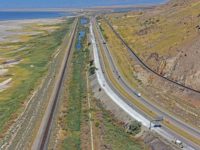2024 Southeast Best Projects
Best Highway/Bridge - I-85 Design-Build Widening MM 98 to MM 106 (Phase 3)
-03.jpg?1729522294)
Photo courtesy Michael Baker International
I-85 Widening MM 98 to MM 106
Blacksburg, S.C.
BEST PROJECT
Submitted by: Michael Baker International
Owner: South Carolina Dept. of Transportation
Lead Design Firm: Michael Baker International
General Contractor: The Lane Construction Corp.
South Carolina’s section of Interstate 85, called the Boom Belt due to burgeoning economic activity throughout the corridor, is now even better equipped to handle its load of travelers and shipping thanks to this design-build project to add two lanes across eight miles of I-85 and reconstruct four interchanges and one railroad bridge.
Working amid heavy traffic traveling at high speeds, the team used innovative traffic control shifts to minimize disruption and complete the project on time and on budget without the need to confine traffic to a single lane.
The South Carolina Dept. of Transportation (SCDOT), Michael Baker International and Lane Construction finished the job in June 2023 after working alongside active traffic of 57,000 daily vehicles since May 2018.
Michael Baker’s design team realigned all four interchanges to minimize residential and commercial impacts and reduce long-term maintenance efforts for SCDOT via a rooftop cross-section that removed significant drainage facilities from the median and reduced wetland and stream impacts by 16%.
-02.jpg)
Photo courtesy Michael Baker International
The project also improved safety by eliminating non-standard interchange and ramp geometry and by removing substandard overpass bridges that carried substantial height clearance restrictions on the busy commercial thoroughfare that connects Atlanta and Charlotte.
A Norfolk Southern Railroad crossing, crucial to the operations of a local quarry, was replaced to provide greater interstate horizontal clearances and meet current design requirements.
Aside from construction complexities, the project’s environmental footprint was considerable. The team utilized a Permittee Responsible Mitigation Plan to offset stream impacts, a process expedited by a contiguous mitigation site adjacent to the project that allowed for a seamless way to offset stream impacts for Phase 2 and Phase 3 of the project.
Hazardous materials were encountered at a contaminated gas station and active groundwater monitoring was necessary at one of the interchanges, requiring close coordination with South Carolina’s health and environmental agencies.




